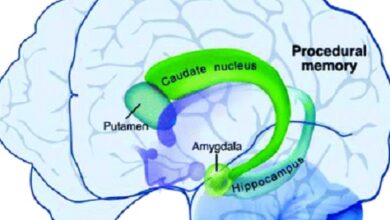What is Exposure therapy how it works types and disorders
Exposure therapy is a type of cognitive-behavioral therapy is to address the feared situation in order to eliminate anxiety or fear. It is generally used in phobias, panic disorder, obsessive-compulsive disorder, anorexia, bulimia, among others. In short, in pathologies where there is anxiety or fear of something happening.
Some examples of feared situations in which exposure therapy is useful are: riding the bus or subway, public speaking, receiving criticism, eating “forbidden” food, drawing blood, etc.
Exposure in phobia to dogs is one of the most common
Exposure can also focus on internal stimuli that cause anxiety or other negative emotions. For example: fear of experiencing anxiety, fainting, worry or illness. Most of these fears are excessive and usually do not correspond to the real danger that this situation would have if it happened. Furthermore, they affect the person’s daily life.
Exposure therapy does not imply forgetting or disappearing fear learning. Instead, the person develops new learning that competes with the old fear memory.
How does exposure therapy work?
When we are afraid of something, we tend to avoid related objects, activities or situations. In the short term, avoidance serves to reduce feelings of fear and nervousness. However, in the long run, it helps to stop the fear from growing and growing.
That’s why it’s important to expose yourself to what you fear in order to eliminate the fear at its root. Exposure therapy breaks the vicious circle of avoidance and fear.
Thus, psychologists create a safe and controlled environment in which they expose patients to things they fear, ensuring that negative consequences do not occur.
For exposure therapy to be effective, the patient must remain in the dire situation until the anxiety subsides or until he finds that the negative consequences his mind imagines do not occur.
It is essential that this therapy be carried out gradually and in a controlled manner. What is sought is that the person systematically faces his fears and controls the impulse to flee the situation.
At first it can be very complicated, because anxiety levels can increase significantly; this is usually done gradually. As the person deals with their fears without the negative consequences they expected, anxiety levels progressively decrease until they disappear.
Why is exposure therapy effective?
It’s not known for sure why exposure therapy works. Apparently, there are different explanations that need not be mutually incompatible.
– Extinction: as feared stimuli are not followed by negative consequences, there is an extinction or disappearance of learned anxiety responses.
– Habituation: the decrease in emotional and physiological activation after the feared stimulus appears several times. It can be said that the body gets tired of remaining at high levels of anxiety and at some point it is reduced.
– Increased self-efficacy expectations: confidence in the ability to face the feared stimulus.
– Reduction of threatening interpretations , which occur when you realize that what is feared does not happen.
– Emotional processing: the person changes their cognitive schemes about what they are afraid of. It establishes new memories and thoughts that are inconsistent with the ideas that underpin the fear.
– Emotional acceptance: assume and tolerate emotional states and negative somatic sensations, without running away from them or trying to control them.
What disorders is it effective for?
It has been scientifically proven that exposure therapy is useful for pathologies such as:
– All types of phobias such as social phobia or agoraphobia.
Panic disorder.
– OCD.
– Post-traumatic stress disorder.
– Generalized anxiety disorder.
– Eating disorders such as anorexia or bulimia. As there is an intense fear of eating certain foods and gaining weight, the patient may be exposed to these stimuli.
Hypochondria.
– Addictive disorders to alcohol, drugs or pathological gambling.
– Anger management. That is, exposing yourself to comments or situations that provoke anger in order to learn to control yourself in the face of them.
Types of exposure therapies
In some cases, traumas or fears can be faced at the same time. You can also work gradually following the process of relaxation techniques.
It usually starts with situations that cause less anxiety and, little by little, the level of difficulty increases.
In the case of a panic attack, it is recommended that the patient feel as close as possible to where the panic occurred and wait for it to pass. It is important that you avoid paying attention to your bodily sensations and face the phobic situation again.
The person accompanying him should sit next to him, but avoid talking to the patient about the sensations he is feeling, as this makes the situation worse.
Different exposure therapies can be distinguished. For example, according to the way of exposing, three types stand out: live exposure, imagination or virtual reality.
Live show
In live view, the person faces the dire situation in real life, in scenarios that usually produce fear. For example, if you are afraid of flying, you could take the person to an airport to watch the planes take off.
This exposure can be done with the help of the therapist in very controlled situations. It is necessary to stay in the situation that triggers the fear until it disappears or subsides.
Sometimes a family member or friend who was previously instructed to help you may also join you.
exposure in imagination
It involves vividly imagining the feared object or situation, with as much detail as possible. This is done with the help and supervision of the therapist. The professional will ensure that he is imagining exactly what causes fear.
This type of exposure seems safer and more comfortable, but it can be tricky for some patients who find it difficult to imagine. Prior training may be required to do this well. There is also a risk of avoiding certain thoughts, preventing full exposure.
Virtual Reality Exhibition
Virtual reality exposure combines components of live exposure and imagination so that the patient is exposed to situations that seem real.
It’s more appealing to patients as it ensures they are in safe environments that won’t get out of control. At the same time, it recreates realistic environments in which it can be completely submerged, being able to create sensations very similar to living stimuli.
On the other hand, three types of exposure therapy can be distinguished according to who accompanies the patient during the process. These are self-exposure, therapist-assisted exposure, and group exposure.
self-exposure
As phobic people tend to be very dependent, it is possible that occasionally it is advisable to expose themselves to angiogenic stimuli.
This method is more powerful and offers longer-lasting results. However, in the initial stages, it is better to be accompanied by the therapist.
For it to be successful, it is necessary that the professional’s instructions are followed. How to set realistic goals, identify potential problem behaviors, and regularly practice self-disclosure with each one. As well as controlling contingencies and knowing how to assess the reduction of anxiety levels in oneself.
Therapist-assisted exposure
It is the most common mode of exposure, where the therapist accompanies the patient in almost the entire exposure process.
Collective Exhibition
It is recommended when you live alone, have poor social skills, or have conflicting relationships with your partner or family where they are uncooperative with therapy.
The group has an additional motivational effect, especially if it is a cohesive group. Another advantage is the social benefits obtained, such as establishing relationships, working with social skills, occupying free time, etc.
However, it is not recommended for other cases, such as social phobia, where the group may be threatening, causing therapy to be abandoned.
Other types of exposure therapy consist of:
systematic desensitization
It is a widely used behavior modification technique. First, a hierarchy of anxiety-producing situations is established. Next, hierarchy stimuli are exposed when the patient is in a safe and very relaxed environment.
For this, relaxation exercises are performed before exposure sessions. The goal is for the feared stimuli to be associated with the incompatible response (relaxation) and to stop producing anxiety.
Approximations or successive frames
It is an operant technique for establishing behaviors. It is used in many cases, but one of them is exposure to feared stimuli or situations.
This technique reinforces or rewards anxiety-producing approach behaviors until the full behavior is achieved.
For example, in someone with a fear of public speaking, you can first try asking a question to a small audience, then make a comment or comment, and then do it in larger groups… Until you can talk without feeling anxiety. All these behaviors will be rewarded in the most appropriate way according to the person.
interoceptive exposure
Interoceptive exposure consists of eliciting feared bodily sensations. For example, people with panic attacks are often afraid of the physiological symptoms of anxiety, such as a fast heartbeat, heat, or sweating.
In this type of exposure, these symptoms would be created (by doing intense physical exercises, for example) until the anxiety subsided and avoidance behaviors.
The aim is to disconnect bodily sensations from panic reactions (Encinas Labrador, 2014).
Exposure prevention and response
It is a type of exposure used to treat obsessive-compulsive disorder. It combines exposure to the feared stimuli plus prevention of the unwanted response.
It is necessary to remember that in obsessive-compulsive disorder there are thoughts and obsessions that the patient tries to neutralize with mental behaviors or rituals.
For example, you may have pollution-related obsessions, and to reduce the anxiety they generate, you may continually engage in cleaning behaviors.
Through this technique, subjects are exposed to their fears (in contact with something contaminated or dirty) while preventing the response (they must remain unwashed until anxiety subsides).
Inundation
Flood is a more intense and abrupt exposure, but effective. It consists of directly exposing yourself to the stimulus or situation that generates the most fear and staying there until the anxiety subsides.
It can last about an hour and is done accompanied by the therapist. This can be done live or in imagination.
Exposure therapy and safety behaviors
For exposure therapy to be effective, safety behaviors must be avoided. These are cognitive or behavioral strategies that patients undertake to try to reduce their anxiety during exposure.
For example, a safety behavior in the face of fear of flying would be taking tranquilizers or sleeping pills.
This means that the person is not fully exposed to their fear, interfering with the effectiveness of the therapy. The problem is that it temporarily relieves fear, but in the medium and long term they maintain anxiety and avoidance.



